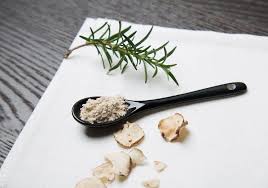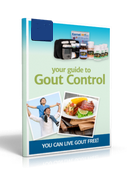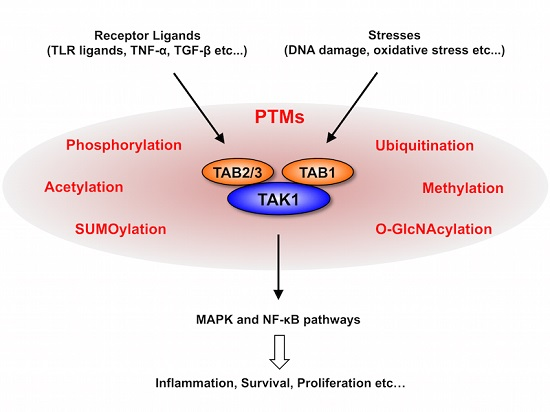(HealthDay)—Rates of in-hospital cardiac procedures continued to increase in people with gout and rheumatoid arthritis (RA) from 1998 to 2014, although they decreased for the general population, according to a study published online Feb. 25 in Therapeutic Advances in Musculoskeletal Disease.Jasvinder A. Singh, M.B.B.S., M.P.H., and John Cleveland, M.D., both from the University of Alabama at Birmingham, used data from the U.S. National Inpatient Sample (1998 to 2014) to examine the frequency of seven common cardiac and orthopedic procedures in hospitalized people with gout and RA compared to the general population.
Continue reading “In-hospital cardiac procedures up for those with gout, rheumatoid arthritis”Gout ‘more than doubles’ risk of kidney failure
Largest ever study on subject uses data from more than 620,000 patients in UK health system
Date: August 28, 2019
Source:University of Limerick
Summary: Patients with gout are at increased risk of chronic kidney disease and kidney failure, according to new research.
Patients with gout are at increased risk of chronic kidney disease and kidney failure, according to new University of Limerick (UL), Ireland led research.
In one of the largest and most detailed studies ever conducted, patients recruited in general practice with a diagnosis of gout were more than twice as likely to develop kidney failure than those without, according to the study led by researchers at University of Limerick’s (UL) Graduate Entry Medical School (GEMS).
Continue reading “Gout ‘more than doubles’ risk of kidney failure”Wearable sweat sensor detects gout-causing compounds
Date:November 25, 2019
Source: California Institute of Technology
Summary: Scientists have developed an easier way to mass-produce highly sensitive sweat sensors that can detect a variety of low-concentration compounds related to health conditions.
There are numerous things to dislike about going to the doctor: Paying a copay, sitting in the waiting room, out-of-date magazines, sick people coughing without covering their mouths. For many, though, the worst thing about a doctor’s visit is getting stuck with a needle. Blood tests are a tried-and-true way of evaluating what is going on with your body, but the discomfort is unavoidable. Or maybe not, say Caltech scientists.
Continue reading “Wearable sweat sensor detects gout-causing compounds”Gout Questions and Answers
Let us better help you better understand this condition – despite the tons of misinformation that circulates on the internet.
Why are blood test results misleading when it comes to a Gout diagnosis?
Blood tests can reveal the concentration of uric acid in your system. However, while you are under an attack your blood could potentially read quite normal. Over 60% of patients presenting with acute gouty arthritis symptoms have uric acid levels of <8mg/dl. Measuring serum uric acid levels while under an attack may not be too helpful in a diagnostic sense. Why? The crystals relentlessly jabbing at your joints are NOT in a soluble form at that time.
Continue reading “Gout Questions and Answers”Is there a relation of temperature and humidity to the risk of Gout attacks?
The shear number of variables involved with recurrent Gout attacks is nothing short of overwhelming. The search can have you running in 50 different directions to try and determine what triggered the attack. What food did I eat? Did I drink enough water? Could it be my medication? Did I hurt myself? Am I too stressed out right now? The list goes on and on. How about the weather? Does the weather factor into the risk? Evidently, it does, and there are studies to prove it.
Boston University School of Medicine conducted a study to test the suspected effects of humidity and temperature on the changes of recurrent gout attacks. This took place over a two-day control period noting temperature, barometric pressure, humidity, and precipitation for each person’s zip code. Adjustments were made for alcohol consumption, purine intake, and diuretic use. The study linked volume depletion, or extracellular fluid volume contraction (ECF) to the risk of recurrent Gout attacks. High temperatures and extreme degrees of humidity, in both directions, were associated with higher risk of gout attacks. High ambient temperature and low humidity yields the greatest association by some 40% compared with moderate temperature and relative humidity. “Our data indicate that both high temperature and high humidity are associated with an increased risk of recurrent gout attacks,” explains Yuquing Zhang, D.Sc., Professor of Medicine and Epidemiology, Boston University School of Medicine; Boston, Massachusetts and an investigator in the study. “Thus, when it’s hot and humid, those with gout should consider drinking more fluids to avoid potentially painful gout attacks.”
Even though there is a proclivity for the distal joints to be affected more due to colder temperatures, the study did not seem to show any correlation between colder weather and higher risk of an attack. Volume depletion, not to be confused with dehydration, and metabolic acidosis are driving forces behind a decrease in uric acid excretion and an increase in uric acid production. Acidosis also affects uric acid solubility allowing for crystal formation. The distal joints tend to carry a lower blood pH making them more susceptible to uric acid crystallization.
High humidity disrupts the body’s ability to regulate its temperature. The evaporative cooling process related to sweating becomes less effective and, in turn, causes the body temperature to rise and perspire in an attempt to cool. The combination of high temperatures and high humidity naturally increase the risk for dehydration. Our beverage selection in this circumstance is crucial. Some may replace this loss with water, but some tend to grab a sugary or beer related option, wreaking even more havoc on the attempts to remain gout attack free. Many do not realize that low humidity can also lead to dehydration by way of increased evaporation from the skin and mucous membranes. This poses an even greater risk due to the fact that it may “feel” cooler further keeping us from replacing this loss by drinking more water as it would require. Think about this when it comes to flying on an airplane. Despite the temperature feeling comfortable, the cabin tends to be very dry. Many experience attacks during travel, and this happens to be one of a many components that add to that risk.
In conclusion, it has been determined that both high temperature and the extremes of humidity are associated with an increased risk of recurrent gout attacks. Under such weather conditions, people with gout should aim to increase fluid intake to replace volume depletion.
Avoiding Gout while traveling
Gout Diet: Are Impossible Burgers/Foods Impossible To Be Good For You?

Continue reading “Gout Diet: Are Impossible Burgers/Foods Impossible To Be Good For You?”
Artichoke Powder for Gout and Joint Health

ARTICHOKE POWDER (Globe Artichoke)
A relative of the hepatoprotective Milk Thistle, is popular for its pungent taste which is attributed to phytochemicals found in the green parts of the plants called cynaropicrin and cynarin, sesquiterpene lactones with documented medicinal actions. The phytochemicals in artichoke have been well documented and the leaves rather than the flower have been found to be higher in medicinal value.
Artichokes contain a very high antioxidant content, and in fact, contain two compounds (apigenin 7-rutinoside and narirutin) that are so unique they aren’t found in any other plant.
Traditional uses have included support for sluggish liver, poor digestion and atherosclerosis. Artichokes offer concentrated sources of amino acids and even help to support the natural growth of probiotics for the digestive system.
Continue reading “Artichoke Powder for Gout and Joint Health”
Cell Death, Cellular Toxicity, and Gout
Considering that all disease occurs at the molecular and cellular level, could all disease share common causes and common solutions?
Toxic damage to cells leads to cellular death, and in large numbers can result in tissue and organ damage/failure. Some tissues and organs hold the capacity for self-repair, while others have no ability to regenerate. For example, the liver can repair damaged sections by fibrous replacement, whereas the nervous system tissue has no ability to regenerate itself. Of course, even the liver will have trouble if the damage is severe and/or continues to suffer from abuse.
Is Uric Acid Good or Bad?
Purines perform multiple important functions within our cells, including regulating energy metabolism and signaling the energy conversion from one to another. Purines are essentially the building blocks for all living things as a necessity for the growth, proliferation and survival of all cells. The two purine bases, adenine and guanine, create bonds that form the DNA ladder. Humans breakdown purines and convert them into uric acid.
Uric acid happens to be a potent DNA protector. All other mammals possess an enzyme known as uricase. Uricase converts uric acid into allantoin, which can easily travel through the bloodstream and readily eliminated through the urine. Humans do not possess this enzyme, therefore, we cannot oxidize uric acid into the more soluble compound of allantoin. Our liver and kidneys are left to do the all-important jobs of purine breakdown and uric acid disposal, conducted respectively.
Blood serum uric acid levels are determined by two components:
- uric acid synthesis
- uric acid excretion
Synthesis takes place in the liver as a result of the breakdown of purines. Purine levels are mostly determined by what is naturally produced by the body, with approximately the other 30% absorbed from the food we eat. The second component, uric acid excretion, is determined by the rate at which the kidneys are able dispose of the excess. According to a study conducted by Hyon K. Choi in 2005, about 90% of hyperuricemia is attributed to impaired renal excretion.
As we mentioned above, uric acid is a potent antioxidant and DNA protector. Could this be why only 10% of the uric acid that enters a normal human kidney is disposed of? Would it be safe to assume the other 90% that is reclaimed and sent back into the bloodstream is done so for our bodies to utilize its powerful antioxidant and free radical neutralizing powers?
According to science…..
Uric acid is responsible for the neutralization of over 50% of the free radicals in our bloodstream. Considering humans and primates are unable to naturally produce Vitamin C, we may have inherited the ability to utilize uric acid. Uric acid remains extremely controversial and difficult to manage. On one hand, uric acid protects high-oxygen tissues (like the brain) from damage and has been shown to increase the risks of several neurological disorders in the presence of sub-par levels. On the other hand, high-serum uric acid levels are inversely associated with the severity of several diseases, especially the state of cardiovascular diseases.
Is there a balance?
Yes, although the course(s) of action to achieve this balance may be equally as complex, as well as individually determined. As a former Gout sufferer, I naturally ventured down the path of reducing my purine intake by focusing on my diet. Once I understood a bit more about the roles of purines and uric acid I was able to conclude that this path was not going lead me to success.
I asked myself the following questions:
- If only 30% of the purines in my body come directly from food, then will a low-purine diet do anything to help with the main 70% of my production?
- Do I have any control over the other 70% that occurs naturally in my body?
- Am I doing anything to directly contribute to higher purine production aside from the food I eat?
- If the food I eat is low-purine, but still unhealthy, does that have any impact on the amount my body is naturally producing?
The last question truly gave me pause. If the natural purine production stems from normal DNA and RNA turnover, were there things I was doing to my body to cause my cells to die and turnover faster than usual?
This brought me to another series of questions, ones I believe to be more relevant to my cause:
- Do my medications and over-the-counter drugs contributing to faster cell death?
- Was I hydrated enough? Cellular dehydration is extremely common and definitely causes cellular turnover.
- Did my slightly overweight body and lack of exercise have anything to do with the health of my cells?
- Was my rather heavy alcohol consumption a bigger problem than just the purines alone? Does it affect my cells, too?
- Did my high stress life contribute to faster cellular death?
- Does my sweet tooth and sugar intake affect my cells and uric acid production?
- If my body can’t naturally produce certain vitamins and antioxidants, could I help my body by supplying enough in my diet and supplementation in hopes of my kidneys not reclaiming as much uric acid to help in their absence?
Looking ahead….
These are some really important questions that opened my eyes to a whole new approach and a whole new outlook on the importance of taking better care of myself. These questions initially targeted my efforts to gauge my cellular health (or lack thereof), but also really put my kidney and liver health into question. Many of us unknowingly damage the health of our cells, furthering excess uric acid production. In doing so, we are also placing unnecessary strain on the very organs we need to help us rid of the excess uric acid. What a conundrum!
These epiphanies led me to better health, elimination of my medications (blood pressure, cholesterol, and Gout), correction of my glucose levels, secured my beliefs in the right all natural remedies, led to my blog, and changed my life! It doesn’t have to be so overwhelming. Take a step back and look at the bigger picture and you will find there is a lot of common sense in play here, and even more common sense solutions. Take it slow, one adjustment at a time for attainable goals. This site offers a series of articles to highlight a bit more on the specifics regarding stress, hydration, diet, and much more
Here’s to your Gout and Inflammation free 2020 and beyond!
What is TAK1 and why is it important to inhibit its potentially destructive pathway?
TAK1 is an enzyme and signaling molecule in humans encoded by the MAP3K7 gene (a mitogen-activated protein). TAK1 regulates cellular death through various pathways. As we have discussed before, programmed cell death is a normal, physiologic process intended to help remove damaged cells. However, unattended cell death is the direct pathway for human disease. TAK1 contains binding proteins that are responsible for cell viability and tissue balance in a variety of organs.
TAK1 is a key molecular component that can readily determine of the fate of our body’s cells. TAK1 has been typically considered pro-survival, however, recent studies have determined that various factors could cause it to induce cell death. Scientifically speaking, studies are exploring the ability to inhibit TAK1 as a therapeutic approach to killing off rogue cancer cells and stopping chronic inflammatory response.
Continue reading “What is TAK1 and why is it important to inhibit its potentially destructive pathway?”


